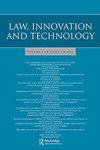“道德机器”的黑暗面和自动驾驶汽车计算伦理决策的谬误
Q1 Social Sciences
引用次数: 15
摘要
本文揭示了道德机器实验的危险,提醒人们反对它用于规范目的,以及它所建立的解决伦理问题的整个方法。除了作者已经确定的限制之外,它还探讨了实验的其他方法限制,并提供了为什么它不足以支持伦理和司法讨论来确定自动驾驶汽车的道德设置的原因。当应用于道德决策时,它展示了计算社会选择方法背后的内在谬误,同时也警告了计算道德系统的危险,比如最近从道德机器的数据中开发出来的“基于投票的系统”。最后,讨论了道德机器对公众舆论的模糊影响;一方面,它成功地提高了全球对自动驾驶汽车伦理问题的认识,值得称赞;另一方面,它是有害的,因为它导致了自动驾驶汽车伦理范围的显著缩小,实际上强加了一种强有力的单向方法,同时忽视了其他主要的道德问题。本文章由计算机程序翻译,如有差异,请以英文原文为准。
The dark side of the ‘Moral Machine’ and the fallacy of computational ethical decision-making for autonomous vehicles
ABSTRACT This paper reveals the dangers of the Moral Machine experiment, alerting against both its uses for normative ends, and the whole approach it is built upon to address ethical issues. It explores additional methodological limits of the experiment on top of those already identified by its authors and provides reasons why it is inadequate in supporting ethical and juridical discussions to determine the moral settings for autonomous vehicles. Demonstrating the inner fallacy behind computational social choice methods when applied to ethical decision-making, it also warns against the dangers of computational moral systems, such as the ‘voting-based system’ recently developed out of the Moral Machine’s data. Finally, it discusses the Moral Machine’s ambiguous impact on public opinion; on the one hand, laudable for having successfully raised global awareness with regard to ethical concerns about autonomous vehicles, and on the other hand pernicious, as it has led to a significant narrowing of the spectrum of autonomous vehicle ethics, de facto imposing a strong unidirectional approach, while brushing aside other major moral issues.
求助全文
通过发布文献求助,成功后即可免费获取论文全文。
去求助
来源期刊

Law, Innovation and Technology
Social Sciences-Law
CiteScore
4.50
自引率
0.00%
发文量
18
期刊介绍:
Stem cell research, cloning, GMOs ... How do regulations affect such emerging technologies? What impact do new technologies have on law? And can we rely on technology itself as a regulatory tool? The meeting of law and technology is rapidly becoming an increasingly significant (and controversial) topic. Law, Innovation and Technology is, however, the only journal to engage fully with it, setting an innovative and distinctive agenda for lawyers, ethicists and policy makers. Spanning ICTs, biotechnologies, nanotechnologies, neurotechnologies, robotics and AI, it offers a unique forum for the highest level of reflection on this essential area.
 求助内容:
求助内容: 应助结果提醒方式:
应助结果提醒方式:


